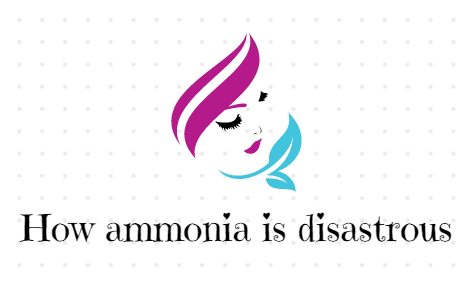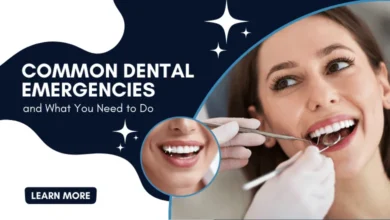How ammonia affects your hair and how to avoid it.

Have you wondered how easily hairs can go all blonde from black and that too permanently? It happens all because of ammonia. But we always forget to talk about ammonia free hair color.
What is Ammonia?
Ammonia is a chemical that is used in hair-dying products. Why? Because it has the ability to lift the cuticle layer of hair and penetrate the cortex. This is how color deposition becomes possible.
Trust me. It’s not as simple as it sounds.
Human hair is one of the most absorbent materials around. Read that again. If you are going to give your hair ammonia, it is obviously going to absorb it. And ammonia is a harsh agent. It has to change the structure of hair to make the deposition of color possible. It enters the hair cuticle. And what is so sensitive about hair cuticles?
Melanin and Keratin. Our hair cuticle consists of melanin which is solely responsible for making natural pigment in the hair. And keratin is a protein highly responsible for regulating the texture of our hair. Aren’t these the two most important characters beautifying our hair game?
Well, Ammonia reacts with both of them. This is how it changes the structure of your hair. Ammonia allows the dying pigments to get deep inside the hair shaft and settle deep in its core. The new color gets so intense that it starts looking like it had come from within the hair. As if you were always a blonde. (Duh! you can’t manipulate your genetic code). Ammonia thus comes with a number of side effects.
Ammonia is a red flag:
You got a red flag because almost all permanent hair colors have ammonia in them.
Hair damage:
While ammonia may help you achieve the desired color for your hair, it is brainy to be mindful of its potential damage. Since it is entering the hair shaft to deposit color. it is sucking the natural moisture and pigment out of it, giving it damaging effects. It can very easily make your hair dry, brittle, frizzy, and challenging to tackle.
Hair fall:
Hair fall is the ultimate call if you keep dying your hair with ammonia colors. Because it constantly penetrates the hair cuticles making the hair roots weaker. It takes off the moisture out of the strands. No moisture means no elasticity, ultimately resulting in hair breakage.
Grey hair:
Though applying ammonia color doesn’t directly cause your hair to go all grey. But it eventually speeds up the process of hair strands losing their natural pigments. Think of it this way. The action of water and air eats up a metal, not immediately but gradually. Similarly, frequent penetration of ammonia in the hair will eat up the natural color of the hair which will turn them grey.
Addiction:
Coloring hair permanently is sometimes addictive. Some people become so used to their favorite color that they just can’t give it up. It becomes hard for them to accept and embrace their original color after carrying the other look for a long period of time.
Allergic reactions:
Some people are sensitive to ammonia. They can’t bare the odor of ammonia ( which is quite strong) as it triggers their allergic reactions. So, such people experience different responses like itching, redness, swelling, etc on their first appointment. Especially ammonia can be harmful to asthma patients. Such patients experience inflammation and irritation in the airways when they inhale ammonia fumes present in hair dyes.
Alternate solution of Ammonia
Think Smart, Choose Smart:
Are you somebody who can’t give up hair coloring? Or you are someone really afraid of trying a new hair color because you are not sure if it will complement your beautiful features?
Whether you are one of them or the one who simply wants to make a smart and safe choice. We have got you.
Demi-Permanent hair dyes: Demi-permanent hair dye is considered a smart choice today that falls somewhere between permanent and semi-permanent hair dyes. Those who can’t embrace either of the two go for the demi-permanent option.
They are ammonia free hair colors like semi-permanent but stay longer than them. Like permanent hair colors, demi doesn’t penetrate the cortex of the hair. It goes on the outer layer of your hair strands, simply wrapping the hair’s cuticle. So, it has the power to stay up to 24 washes approx. which is more long-lasting than the semi-permanent series.
Make sense? Let’s learn more facts to decide if it’s worth your time and money.
Demi-Permanent Color is a safe option:
You are allergic to ammonia? And you want to see yourself in a different hair color look at least once in this lifetime? But you are also somebody who can’t keep up with a high-maintenance routine? Then Demi-permanent is definitely for you.
No hair damage:
The absence of bleach and ammonia in demi-permanent dyes protects hair from damaging effects. Such dyes don’t play with the natural hair pigment present in the innermost layer of your hair. The natural moisture stays safe and the hair doesn’t get all dry and frizzy.
No hair fall:
Like permanent hair dyes, the roots don’t weaken by dying hair with demi-permanent colors. Why? Because they don’t dare penetrate the hair scalp and so don’t have the gateway access to reach your hair follicles.
No grey hairs :
You don’t have to worry about your hair going grey in the long run when you use ammonia-free colors. Demi-permanent color does not allow the making of such an environment, where the hair follicles stop producing their natural pigment. Because the follicles remain protected as there’s no deeper penetration of artificial pigments in them.
Keep coloring :
Don’t give up coloring and flaunting your unique locks if you don’t feel like it. Just be smart enough to choose ammonia-free colors to avoid permanent damage.
Say bye to allergic reactions:
Since demi-permanent dyes are free from ammonia and peroxide. You don’t have to worry about getting reactions like skin irritation, inflammation, swelling, etc. Feel easy and confidently opt for demi-permanent hues.
Be confident, be colorful, and enjoy your very own colorful vibe with Belini’s/Eazicolor demi-permanent safe series. Because your health and style, both matter.




